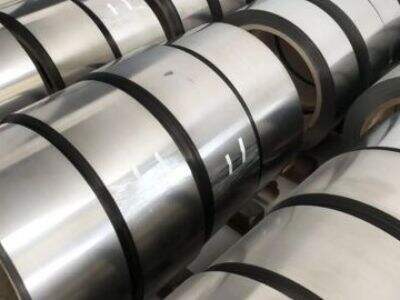Electric heating pipesis a heater that produces heat from electricity instead of gas or oil. Nearly all the big automobile manufacturers are making electric vehicles today because they are becoming very popular and achieve maximum on-road performance while running at a significantly lower cost. They replace fossil fuels with heat, so they are well-liked because they operate effectively without fuel to warm spaces or oil to generate generators. But to help these pipes perform efficiently and securely for everyone who uses them, it's necessary to tackle a few fundamental issues in their planning and execution.
For pipes that heat, the key point of design is simply electric.
Material makes up the Bulk of Electric Heating Pipe Design Thermocouple material These pipes typically consist of some special metals capable of withstanding a lot of heat and resisting corrosion. Nickel-chromium alloy is among the most widely used material. This material possesses a high tensile strength, yields a stable chemical with minimal or no intermediate products, and is extremely resistant to high-temperature degradation reverting to a crude state. The size and shape of the pipe itself is another key design consideration. How efficiently the pipe emits heat inside a room and how much surface area it can warm up with efficiency are directly affected by these factors. Good design will also feature a smart temperature controller, enabling you to control and dispense heat produced by the pipes.
Basic Factors to Help Electric Heating Be Effective
For these electric heating pipes Enameled wire to be effective, a number of basic factors can be involved. One of these factors is the way the pipes are installed in a house or building. Properly designed, the heating element inside the pipes will stay near the inner surface, where it will function most effectively. By being close to this surface, it has an efficient means of transferring the produced heat to the region that must be heated. A third significant is the insulation layer surrounding the heating pipe Good insulation keeps heat within the pipe, from leaking out into the surrounding environment. It increases heating devices efficiency and conserves energy. Lastly, electric heating pipes need to be engineered to emit a constant and consistent range of heat flow. That is, the heating system should not suddenly and drastically fluctuate the temperature, or switch off abruptly -- very uncomfortable.
Electrically heated alloy material : finding a balance between the amount of heat produced and energy efficiency
Electric heating pipes must be balanced so that they can produce sufficient heat for the space without using too much energy. Which, therefore, translates to the fact that Electrically heated alloy material must produce the amount of heat required, while using the minimum amount of electricity. Achieving this balance, takes precise design and engineering. This procedure also includes creating a means of efficiently controlling the heat that is generated. These sensors ought to be capable of sensing the temperature in the room and measure it accurately. This ensures the system only produces as much warmth as is needed, which reduces energy wastage. Setting all the parts together to operate efficiently is the optimum means of maximizing your electric heating system as an investment.
Features that Must Be Included on an Electric Heating Pipe
Designing electric heating pipes also has several very significant factors to account for to make them safe and reliable. For instance, there is a safety mechanism that inhibits the pipes from overheating. This means that the system ought to have a mechanism of shutting down by itself upon acquiring knowledge that the temperature is going beyond limits. This feature acts to safeguard both the system and its users. Also, for consistent operation, there must be precise temperature control, and there must be a high quality thermostat. Another aspect is that system must have an automatic power-down feature that automatically switches the system off after some time. That way, assures that the pipes do not operate for longer hours than required, wasting energy and potentially creating issues.
 EN
EN
 AR
AR
 DA
DA
 NL
NL
 FI
FI
 FR
FR
 DE
DE
 EL
EL
 HI
HI
 IT
IT
 JA
JA
 KO
KO
 NO
NO
 PL
PL
 PT
PT
 RO
RO
 RU
RU
 ES
ES
 SV
SV
 TL
TL
 IW
IW
 ID
ID
 SR
SR
 SL
SL
 UK
UK
 VI
VI
 HU
HU
 MT
MT
 TH
TH
 TR
TR
 AF
AF
 MS
MS
 GA
GA
 AZ
AZ
 MN
MN
 MY
MY
 KK
KK
 UZ
UZ
 KY
KY
 BN
BN

